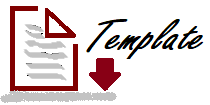PENDEKATAN STM MELALUI PENGGUNAAN APLIKASI ANDROID DALAM PEMBELAJARAN IPS DI SMP KOTA BANDUNG
(1) Prodi Pendidikan IPS, FPIPS, Universitas Pendidikan Indonesia, Bandung, 40154, Indonesia
(2) Prodi Pendidikan IPS, FPIPS, Universitas Pendidikan Indonesia, Bandung, 40154, Indonesia
(3) Prodi Pendidikan IPS, FPISBS, Institut Pendidikan Indonesia, Garut, 44151, Indonesia
(*) Corresponding Author
DOI: https://doi.org/10.56680/slj.v4i3.51585
Abstract
Keywords
Full Text:
PDFReferences
Asamoah, M.K. (2019). TPACKEA Model for Teaching and Students’ Learning. Journal of Academic Ethics. 13 February 2019
Banks, J.A. 1985. Teaching Strategies for the Social Studies Inquiry, Valuing, and Decision Making. New York & London : Longman.
Kennedy, Paul, 1995. Menyiapkan Diri Menghadapi Abad Ke-21, Terjemahan S.Maimoen, Jakarta Yayasan Obor.
Naisbit, John, dan Philips, Douglas, (2001) High Tech High Touch, Penerjemah: Dian R. Basuku, Bandung: Mizan Media Utama.
Ohmae, Kenichi. 1991. Dunia Tanpa Batas, Terjemahan FX. Budiyanto, Jakarta: Binarupa Aksara
Soemantri, Muhammad Numan. (2001) Menggagas pembaharuan Pendidikan IPS. Bandung. Rosda
Tyler, R.W. (1949). Basic Principles of Curriculum and Instruction. Chicago & London : The University of Chicago Press.
Wahab, A. A dkk, (2009), Konsep Dasar IPS, Jakarta, Universitas Terbuka
Mishra, P., & Koehler, M. J. (2006). Technological pedagogical content knowledge: A framework for integrating technology in teachers’ knowledge. Teachers College Record, 108 (6), 1017–1054
Koehler, M.J., & Mishra, P. (2008). Introducing TPCK. AACTE Committee on Innovation and Technology (Ed.), The handbook of technological pedagogical content knowledge (TPCK) for educators (pp. 3-29). Mahwah, NJ: Lawrence Erlbaum Associates.
Mishra, P. & Koehler, M. (2009). Too Cool for School? No Way! Using the TPACK Framework: You Can Have Your Hot Tools and Teach with Them, Too. Learning and Leading with Technology, 36(7) p14-18.
Harris, J., & Hofer, M. (2009).
Instructional planning activity types as vehicles for curriculum-based TPACK development. In C. D. Maddux, (Ed.) Research highlights in technology and teacher education 2009 (pp. 99-108). Chesapeake, VA: Society for Information Technology in Teacher Education (SITE).
Padli, F., Rusdi, R., & Hendra, H. (2022). Strategi Guru Geografi Dalam Penggunaan Media Pembelajaran Pada Pembelajaran Online. Jambura Geo Education Journal, 3(1), 11-20.
Marshall, M. 2013. Integrating technology by using the TPAC Model. [Online]. Tersedia : https://markmarshalledu.com/2013/10/21/integrating-technology-byusing-the-tpac-model/
Article Metrics
Abstract view : 43 times | PDF view : 0 timesRefbacks
- There are currently no refbacks.
Copyright (c) 2023 Mina - Holilah

This work is licensed under a Creative Commons Attribution-NonCommercial 4.0 International License.














